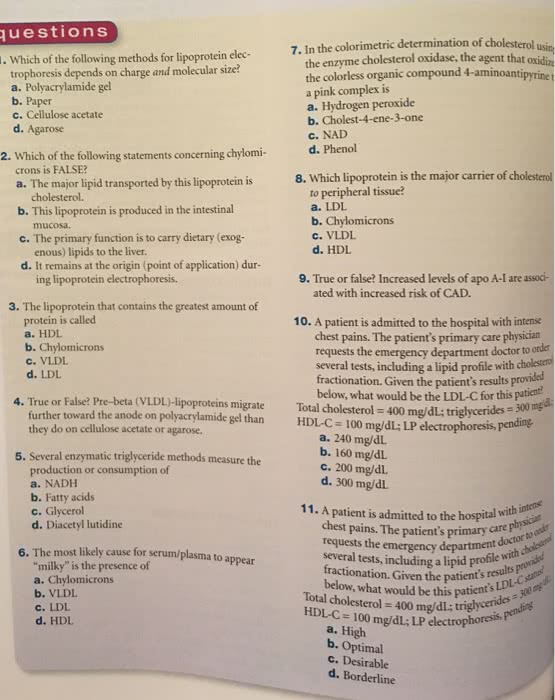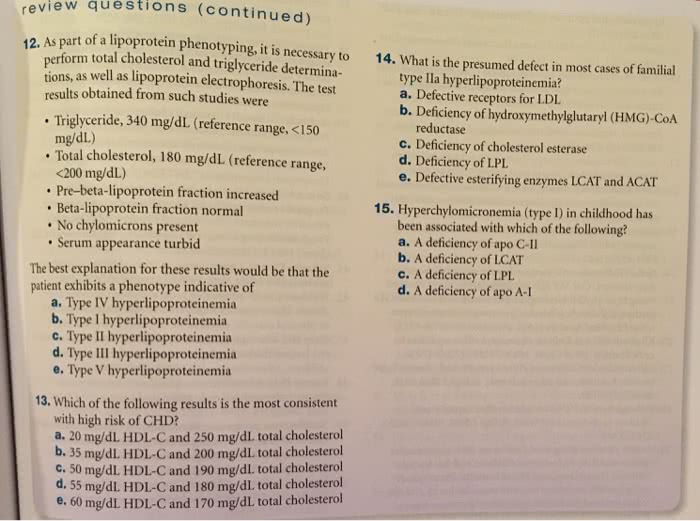CHE 211 Study Guide - Final Guide: Very Low-Density Lipoprotein, Diseae, Blood Plasma

Organic Chemistry 2: Lipids
Complex Lipids
In the body, lipids need to be transported through the blood stream to where they are
stored, used for energy or used to make hormones; the problem is that most lipids are
non-polar/insoluble in the aqueous portion of blood in order to increase their
solubility, lipids are bonded to other types of molecules such as proteins, and
phospholipids to form water soluble complex lipids called lipoproteins
Complex lipids are those bonded to other types of molecules
Lipoproteins – spherical particle with an outer surface comprised of polar proteins and
phospholipids that surround hundreds of non-polar molecules such as triglycerides and
cholesterol esters
There are 4 major class of lipoproteins that DIFFER in density, lipid composition and
function (chylomicrons, VLDL, LDL and HDL)
- Molecular complexes found in blood plasma
- They contain:
▪ Neutral lipid core of cholesterol esters and/or TAGs
▪ Surrounded by a layer of: phospholipids, cholesterol and protein
Major Classes of Lipoproteins
1) Chylomicrons:
• These are formed in the mucosal cells of the small intestine and carry dietary
triglycerides from the intestines to other tissues
• Very large and very low density
• Transport intestine adipose
2) VLDL: (very low density lipoprotein)
• Made in liver
• Transport lipids to tissues (transport triacylglycerides, phospholipids and cholesterol to
tissues for storage or to muscles for energy)
3) LDL: (low density lipoprotein)
• Carry cholesterol to tissues to be used for the synthesis of cell membrane, steroid
hormones and the bile salts
• When the level of LDL exceeds the amount of cholesterol needed for these functions,
the LDL deposit cholesterol in the arteries, which can restrict blood flow and increase
the risk of heart disease this is why LDL cholesterol is the bad cholesterol
4) HDL: (high density lipoprotein)
• Made in liver
find more resources at oneclass.com
find more resources at oneclass.com
Document Summary
Complex lipids are those bonded to other types of molecules. Lipoproteins spherical particle with an outer surface comprised of polar proteins and phospholipids that surround hundreds of non-polar molecules such as triglycerides and cholesterol esters. There are 4 major class of lipoproteins that differ in density, lipid composition and function (chylomicrons, vldl, ldl and hdl) They contain: neutral lipid core of cholesterol esters and/or tags, surrounded by a layer of: phospholipids, cholesterol and protein. The liver synthesizes most of the cholesterol needed for biochemical functions within our body and excess cholesterol comes from our diet. Since high cholesterol levels are associated with hardening of the arteries and heart disease, the levels of ldl and hdl are generally determined during yearly examinations. The recommended levels for total cholesterol are less than 200 mg/decilitre, with ldl being less than 130 mg/decilitre and hdl being over 40mg/decilitre.


